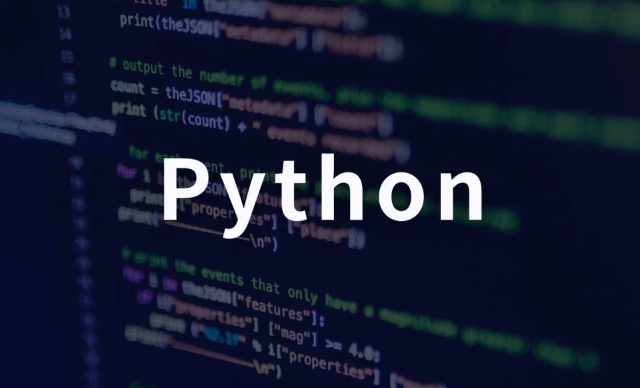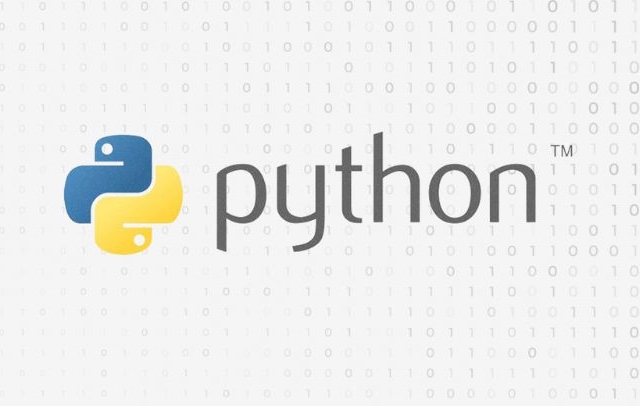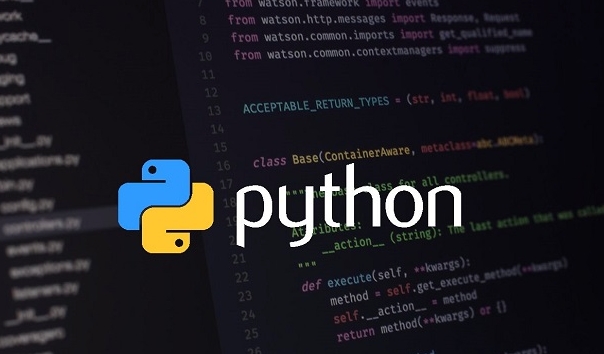Assert is an assertion tool used in Python for debugging, and throws an AssertionError when the condition is not met. Its syntax is assert condition plus optional error information, which is suitable for internal logic verification such as parameter checking, status confirmation, etc., but cannot be used for security or user input checking, and should be used in conjunction with clear prompt information. It is only available for auxiliary debugging in the development stage rather than substituting exception handling.

Python's assert statement is actually a very practical but often overlooked gadget. It is mainly used in the debugging phase to help developers quickly discover situations that "should not happen" in the program. Simply put, when a certain condition is not met, the program directly reports an error instead of continuing to run, causing more difficult problems to check.

What is assert?
assert is a built-in keyword in Python to check whether an expression is true. If it is false (False), an AssertionError exception is thrown. The basic syntax is:

assert condition, error message (optional)
For example, you want to make sure that a variable is a positive number:
x = -5 assert x > 0, "x must be greater than 0"
At this time, the program will report an error and display the prompt message you wrote. This is especially useful in the development and testing phases.

When to use assert?
assert is not used to handle user input errors or external exceptions, it is more suitable for internal logical verification . for example:
- Function parameters should meet certain prerequisites
- After a certain piece of code is executed, the intermediate result should be a certain state
- Some branches in the program flow will not be executed theoretically
For example: If you write a function that only accepts string-type parameters, you can add a sentence at the beginning:
def process_name(name):
assert isinstance(name, str), "name must be a string"
# Follow-up operationsIn this way, when others pass on the wrong type, they can immediately discover the problem.
Notes and usage suggestions
Don't use assert to do safety checks
Because Python can disable all assert statements with the-Oparameter at runtime, you should not put sensitive logic (such as permission judgment) in assert.The error message should be as clear as possible
Adding appropriate prompts can help you locate problems faster. For example:assert len(data) == expected_length, f "The data length should be {expected_length}, and it is actually {len(data)}"Used to assist in development, not to replace exception handling
Formal error handling mechanisms (such as try-except) are the standard way to deal with runtime errors. assert is more like a "self-check" and is suitable for use during the development stage.
Let's summarize
Assert is essentially an assertion tool that helps you confirm that "it must be right here." Although it seems simple, it is very useful when debugging complex logic or multi-person collaboration. Just remember not to treat it as a formal error handling method.
Basically that's all, it's not complicated to use, but it's easy to ignore its value.
The above is the detailed content of Explain Python assertions.. For more information, please follow other related articles on the PHP Chinese website!

Hot AI Tools

Undress AI Tool
Undress images for free

Undresser.AI Undress
AI-powered app for creating realistic nude photos

AI Clothes Remover
Online AI tool for removing clothes from photos.

Clothoff.io
AI clothes remover

Video Face Swap
Swap faces in any video effortlessly with our completely free AI face swap tool!

Hot Article

Hot Tools

Notepad++7.3.1
Easy-to-use and free code editor

SublimeText3 Chinese version
Chinese version, very easy to use

Zend Studio 13.0.1
Powerful PHP integrated development environment

Dreamweaver CS6
Visual web development tools

SublimeText3 Mac version
God-level code editing software (SublimeText3)

Hot Topics
 How to iterate over two lists at once Python
Jul 09, 2025 am 01:13 AM
How to iterate over two lists at once Python
Jul 09, 2025 am 01:13 AM
A common method to traverse two lists simultaneously in Python is to use the zip() function, which will pair multiple lists in order and be the shortest; if the list length is inconsistent, you can use itertools.zip_longest() to be the longest and fill in the missing values; combined with enumerate(), you can get the index at the same time. 1.zip() is concise and practical, suitable for paired data iteration; 2.zip_longest() can fill in the default value when dealing with inconsistent lengths; 3.enumerate(zip()) can obtain indexes during traversal, meeting the needs of a variety of complex scenarios.
 What are python iterators?
Jul 08, 2025 am 02:56 AM
What are python iterators?
Jul 08, 2025 am 02:56 AM
InPython,iteratorsareobjectsthatallowloopingthroughcollectionsbyimplementing__iter__()and__next__().1)Iteratorsworkviatheiteratorprotocol,using__iter__()toreturntheiteratorand__next__()toretrievethenextitemuntilStopIterationisraised.2)Aniterable(like
 How to call Python from C ?
Jul 08, 2025 am 12:40 AM
How to call Python from C ?
Jul 08, 2025 am 12:40 AM
To call Python code in C, you must first initialize the interpreter, and then you can achieve interaction by executing strings, files, or calling specific functions. 1. Initialize the interpreter with Py_Initialize() and close it with Py_Finalize(); 2. Execute string code or PyRun_SimpleFile with PyRun_SimpleFile; 3. Import modules through PyImport_ImportModule, get the function through PyObject_GetAttrString, construct parameters of Py_BuildValue, call the function and process return
 What is a forward reference in Python type hints for classes?
Jul 09, 2025 am 01:46 AM
What is a forward reference in Python type hints for classes?
Jul 09, 2025 am 01:46 AM
ForwardreferencesinPythonallowreferencingclassesthatarenotyetdefinedbyusingquotedtypenames.TheysolvetheissueofmutualclassreferenceslikeUserandProfilewhereoneclassisnotyetdefinedwhenreferenced.Byenclosingtheclassnameinquotes(e.g.,'Profile'),Pythondela
 Parsing XML data in Python
Jul 09, 2025 am 02:28 AM
Parsing XML data in Python
Jul 09, 2025 am 02:28 AM
Processing XML data is common and flexible in Python. The main methods are as follows: 1. Use xml.etree.ElementTree to quickly parse simple XML, suitable for data with clear structure and low hierarchy; 2. When encountering a namespace, you need to manually add prefixes, such as using a namespace dictionary for matching; 3. For complex XML, it is recommended to use a third-party library lxml with stronger functions, which supports advanced features such as XPath2.0, and can be installed and imported through pip. Selecting the right tool is the key. Built-in modules are available for small projects, and lxml is used for complex scenarios to improve efficiency.
 What is descriptor in python
Jul 09, 2025 am 02:17 AM
What is descriptor in python
Jul 09, 2025 am 02:17 AM
The descriptor protocol is a mechanism used in Python to control attribute access behavior. Its core answer lies in implementing one or more of the __get__(), __set__() and __delete__() methods. 1.__get__(self,instance,owner) is used to obtain attribute value; 2.__set__(self,instance,value) is used to set attribute value; 3.__delete__(self,instance) is used to delete attribute value. The actual uses of descriptors include data verification, delayed calculation of properties, property access logging, and implementation of functions such as property and classmethod. Descriptor and pr
 how to avoid long if else chains in python
Jul 09, 2025 am 01:03 AM
how to avoid long if else chains in python
Jul 09, 2025 am 01:03 AM
When multiple conditional judgments are encountered, the if-elif-else chain can be simplified through dictionary mapping, match-case syntax, policy mode, early return, etc. 1. Use dictionaries to map conditions to corresponding operations to improve scalability; 2. Python 3.10 can use match-case structure to enhance readability; 3. Complex logic can be abstracted into policy patterns or function mappings, separating the main logic and branch processing; 4. Reducing nesting levels by returning in advance, making the code more concise and clear. These methods effectively improve code maintenance and flexibility.
 Implementing multi-threading in Python
Jul 09, 2025 am 01:11 AM
Implementing multi-threading in Python
Jul 09, 2025 am 01:11 AM
Python multithreading is suitable for I/O-intensive tasks. 1. It is suitable for scenarios such as network requests, file reading and writing, user input waiting, etc., such as multi-threaded crawlers can save request waiting time; 2. It is not suitable for computing-intensive tasks such as image processing and mathematical operations, and cannot operate in parallel due to global interpreter lock (GIL). Implementation method: You can create and start threads through the threading module, and use join() to ensure that the main thread waits for the child thread to complete, and use Lock to avoid data conflicts, but it is not recommended to enable too many threads to avoid affecting performance. In addition, the ThreadPoolExecutor of the concurrent.futures module provides a simpler usage, supports automatic management of thread pools and asynchronous acquisition






